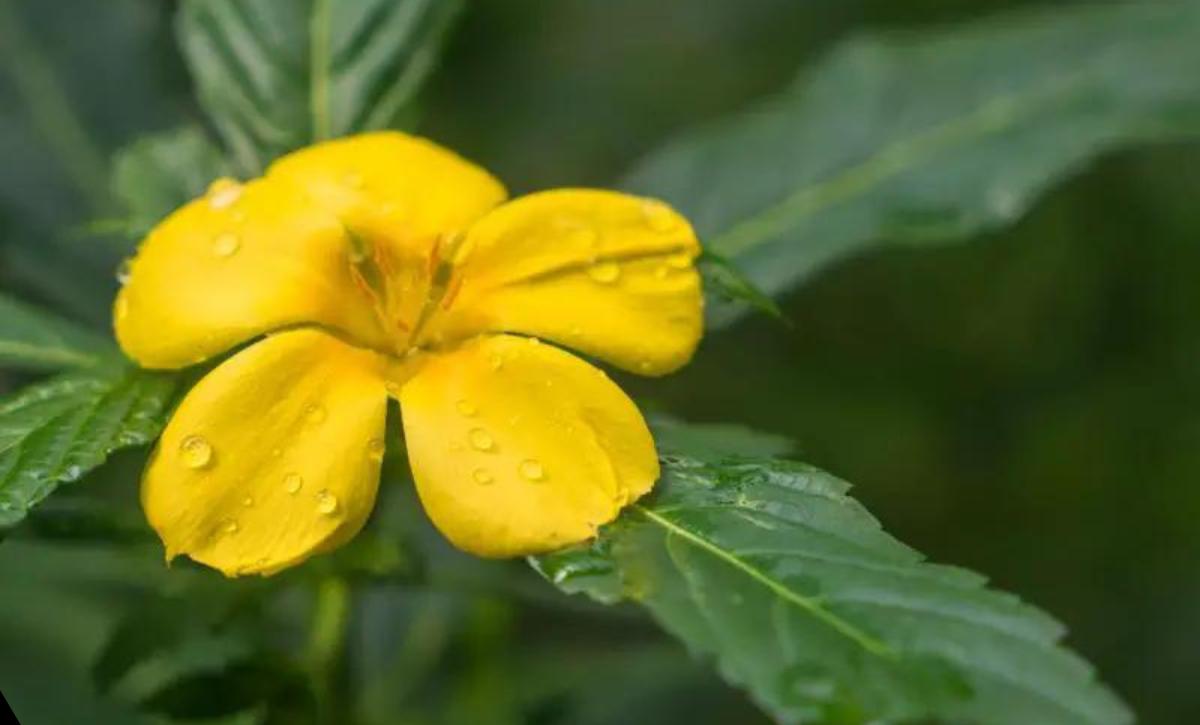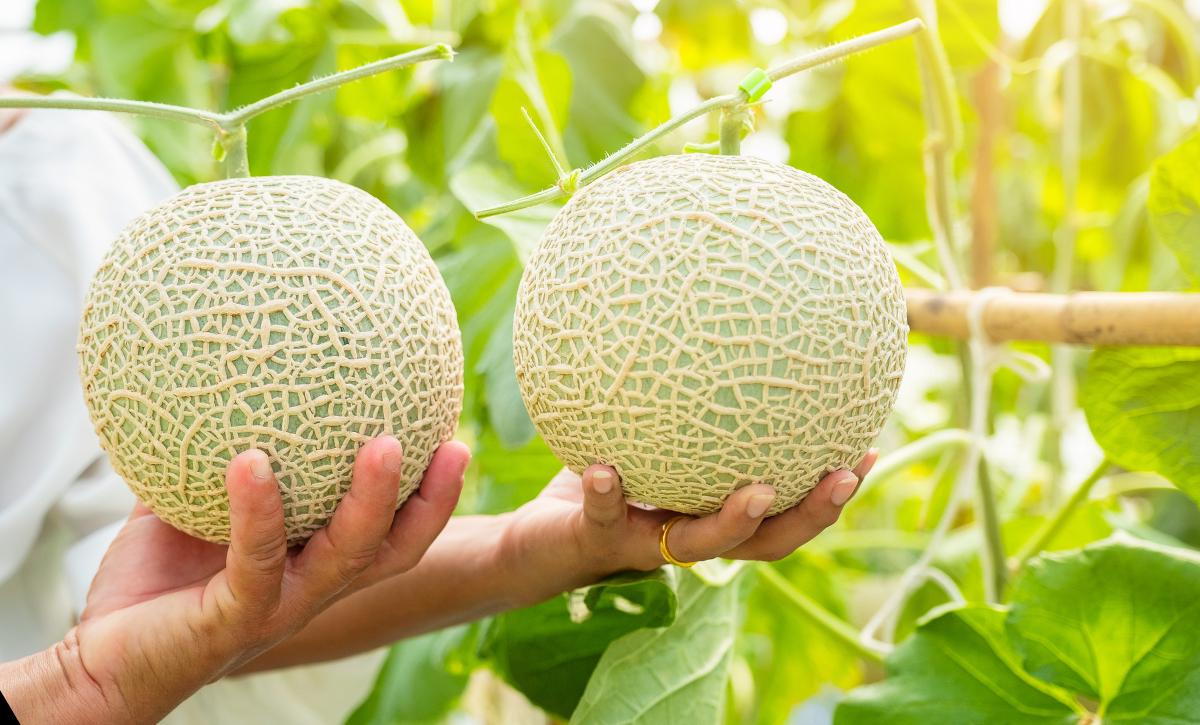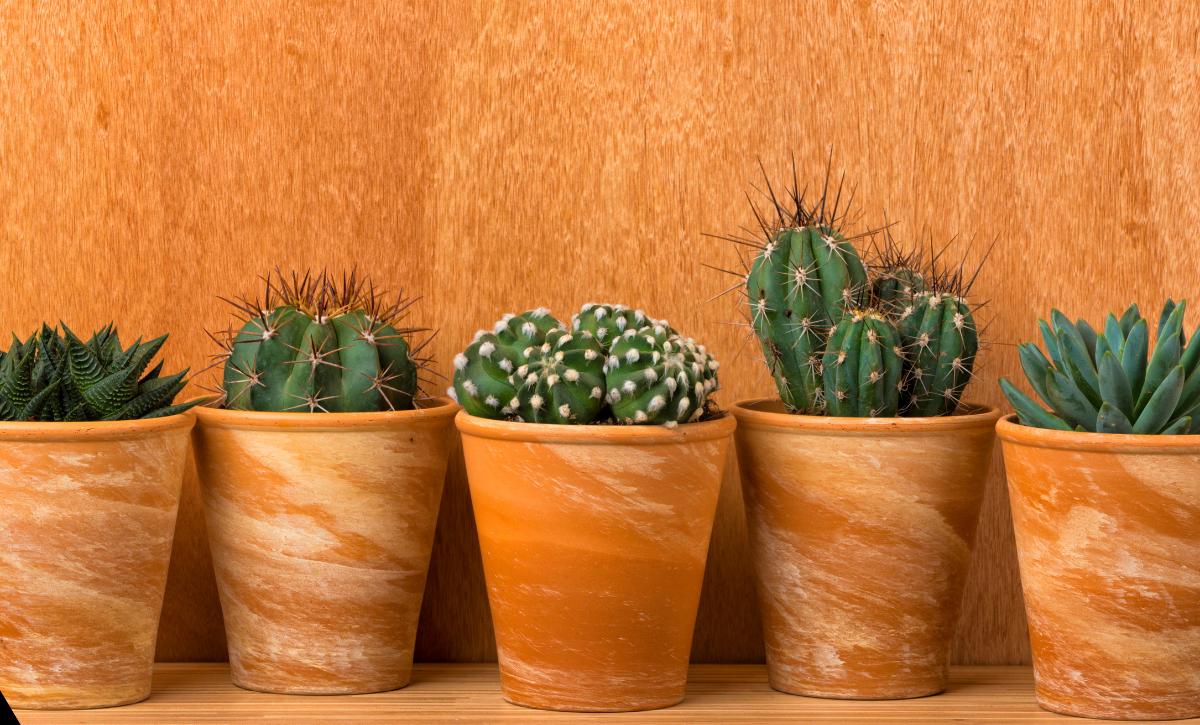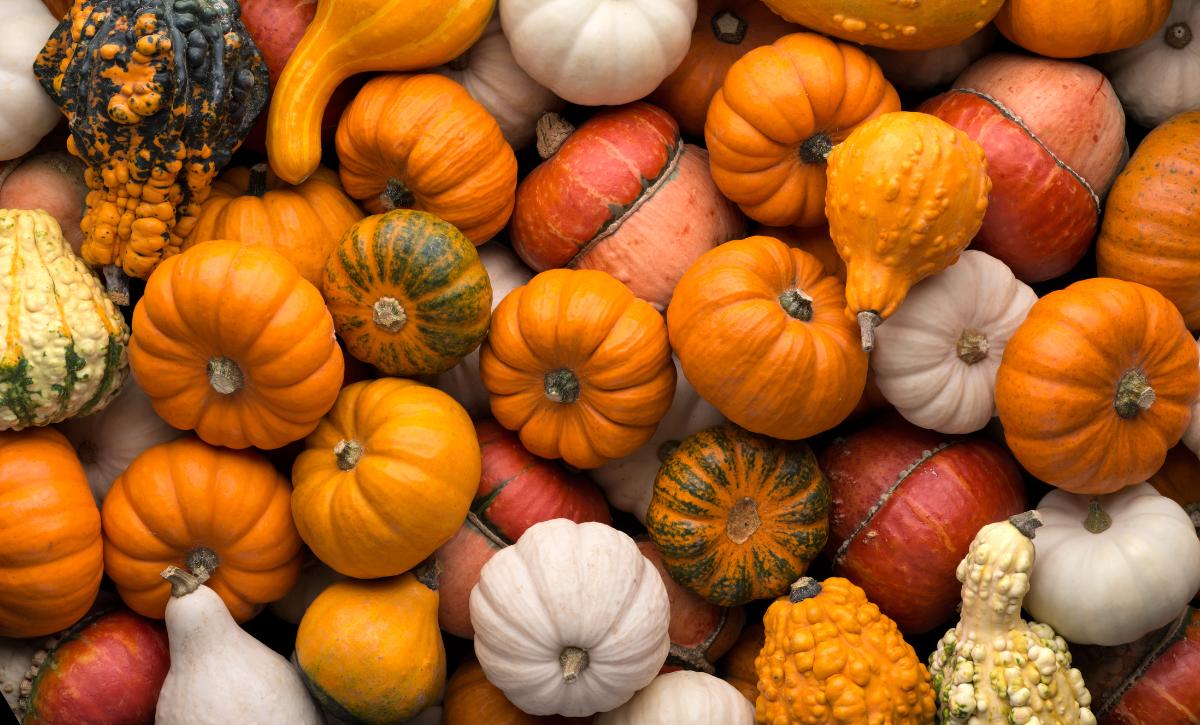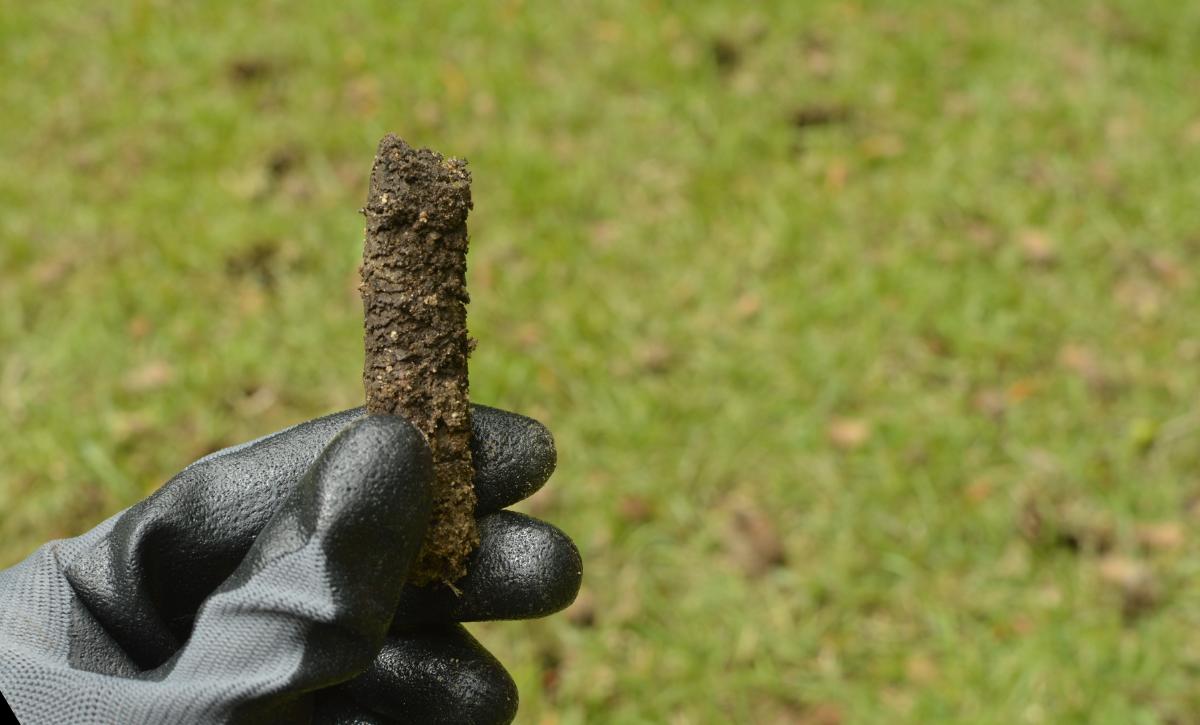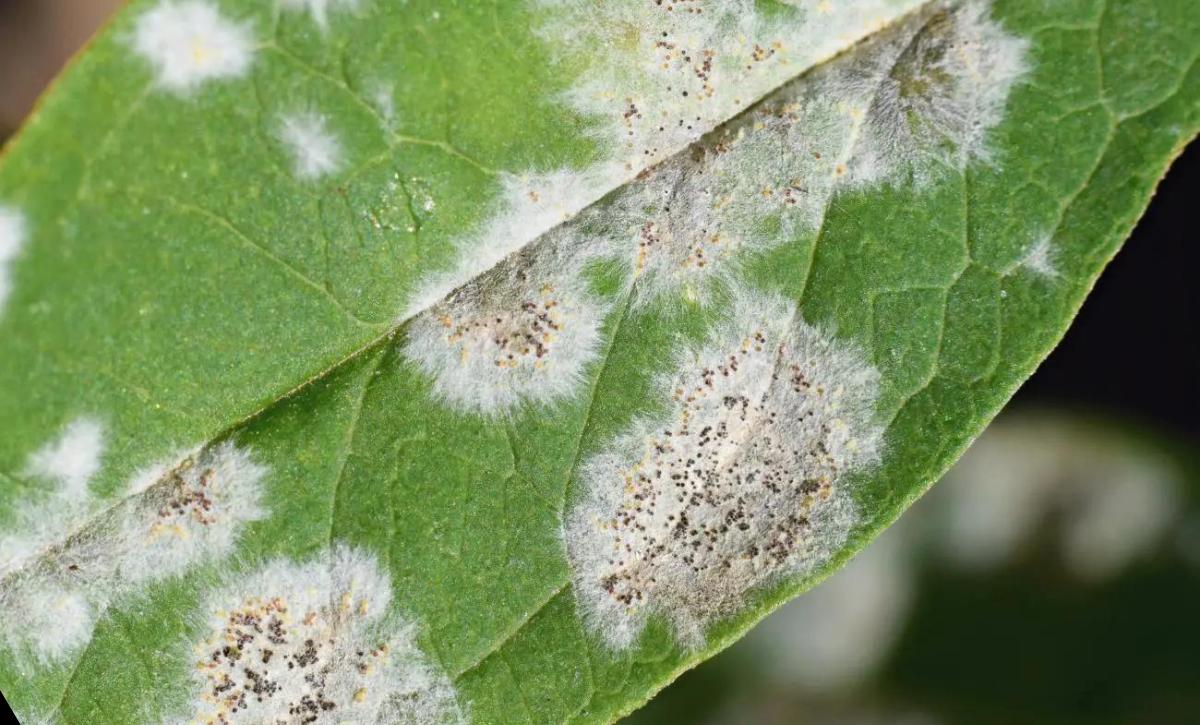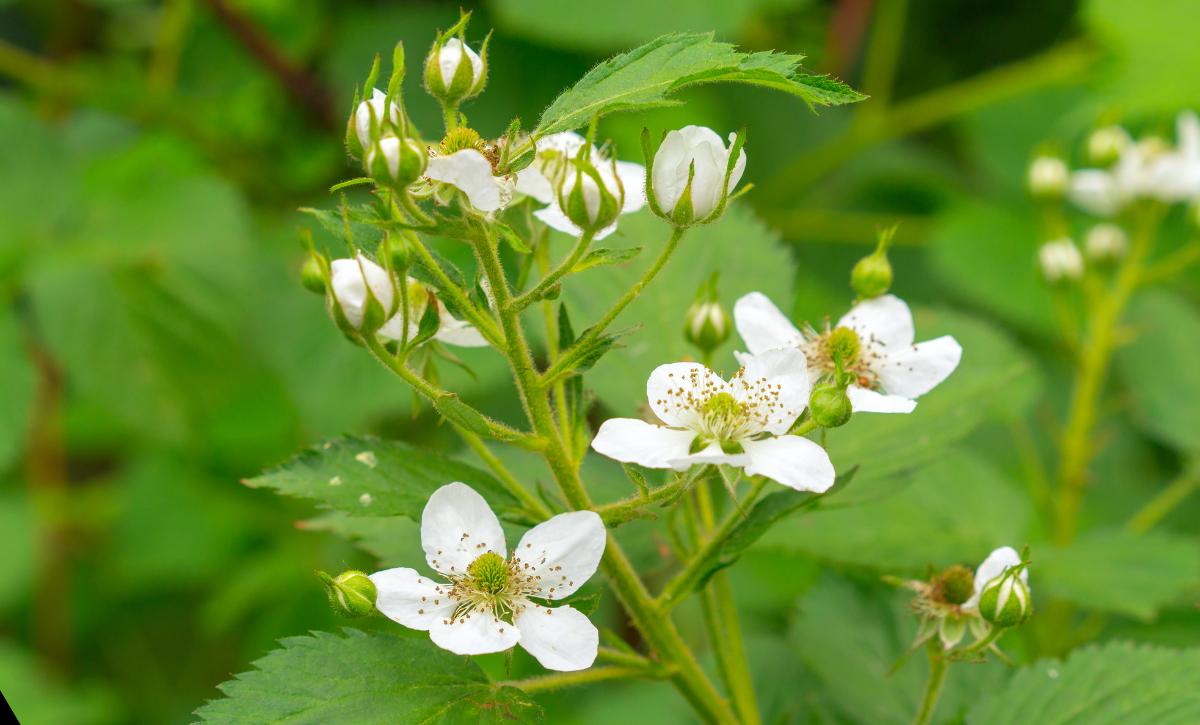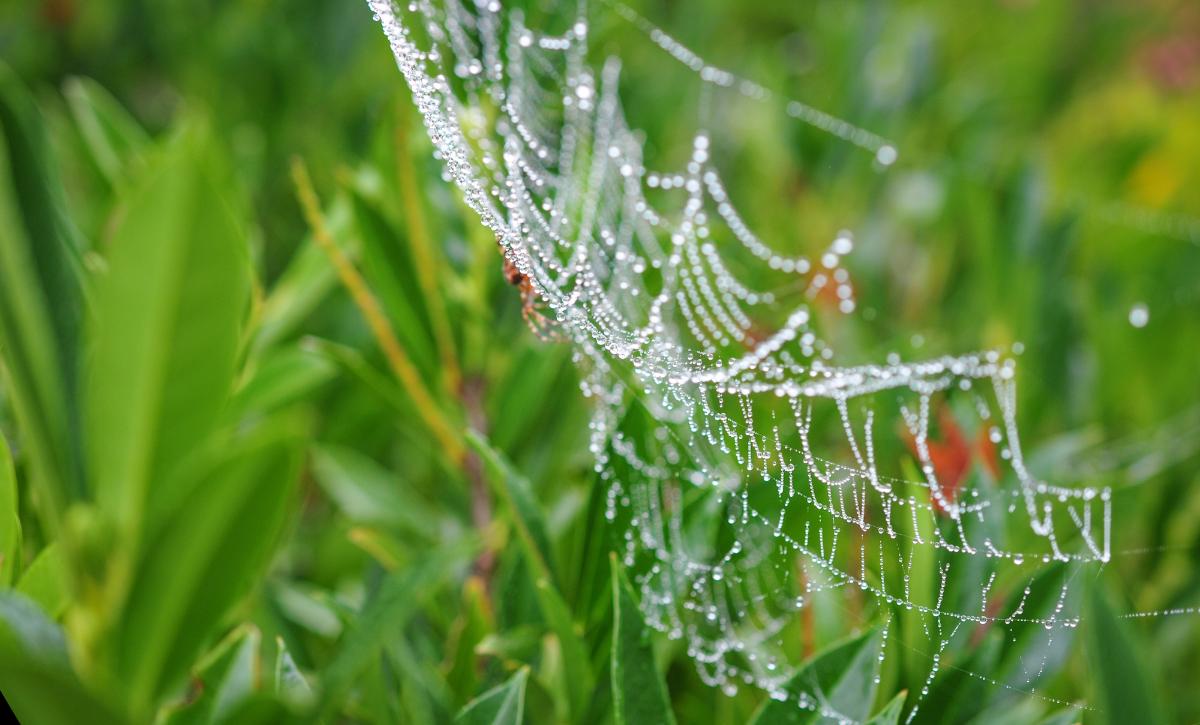Blackberries are one of the most famous berry species. They’re used in making juices, jams, and fizzy drinks and are a key ingredient in apple crumble pie.
What other way to ensure you have a consistent supply of this king of the berry world than growing them yourself? Trust me, it’s hard to go back once you have tasted the fruits of your labor (literally!).
Growing these berries is an excellent idea, but before we dive deep into what we need to know about growing blackberries, there’s one question we must answer, “when do blackberries bloom?”
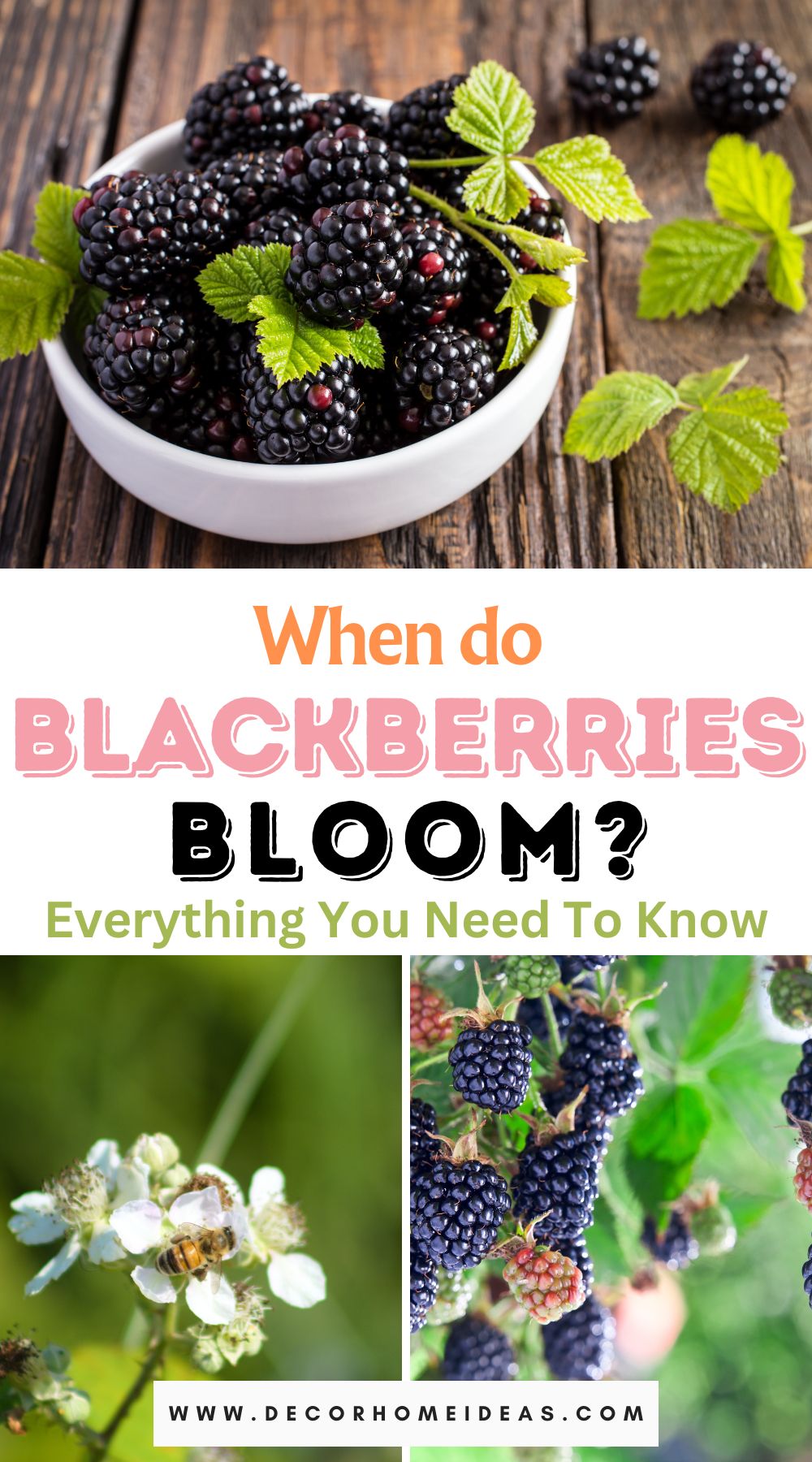
Blooming time is instrumental in ensuring you get the most out of your plant. In this article, we’ll answer this question and others such as blackberry growing stages, fruit production and harvesting. We’ll also provide plant care tips.
Before we get in too deep about blackberries, here is some basic information about these fruits:
| Scientific name: | Rubus Fruticosus |
| Native habitat: | Europe |
| Growth rate: | Moderate growth rate |
| Bush size: | 3-4 feet tall |
When Do Blackberries Bloom?
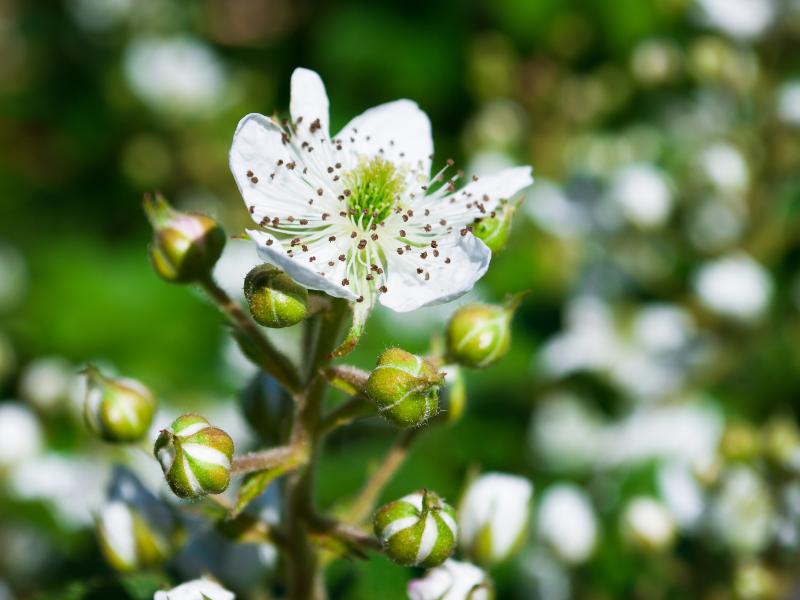
There are a couple of factors that will affect the period that a blackberry will bloom. For example, different species will have different blooming periods, and the climatic conditions will impact blooming, too.
In USDA zones 7 and above, where the climatic conditions are usually warmer, blackberry plants will bloom in mid-April and early May. On the other hand, in colder regions (below zone 7), blackberries will start blooming in late May.
You can choose whether you want the early blooming or the late blooming variety based on the region in which you reside.
One of the early blooming varieties is the Choctaw cultivar. This variety thrives in USDA zone 8 through 9. While Choctaw blooms early, it’s rather thorny, which may be off-putting to some gardeners.
There are also thornless varieties, such as the Navaho and Arapaho, but they bloom much later compared to the Choctaw. However, the Arapaho blooms approximately 11 days before the Navaho variety and is viewed as an early blooming variety compared to the former.
When do Wild Blackberries Bloom?
Estimating the blooming time of domesticated blackberries is easy, but is the time the same as that of wild blackberries?
Wild blackberries start flowering in late spring, which will continue into early summer. The blooming period may sometimes run into August, especially in cooler weather.
Like in domesticated types, there are different varieties of wild blackberries, each with a different blooming period.
The Himalayan type starts blooming from June to August, while the Cutleaf blackberry will start flowering from July to August, so with this regard, the Himalayan type is the early blooming variety.
When Do Blackberry Plants Bloom in the United States?
Blackberries will bloom early in the south as compared to northern regions.
In the south, blackberry bushes will begin blooming in early to mid or late March. As you move north to colder climates, the blooming time increases, and flowers may appear in late spring to early summer.
How Long Does It Take Blackberries To Bloom?
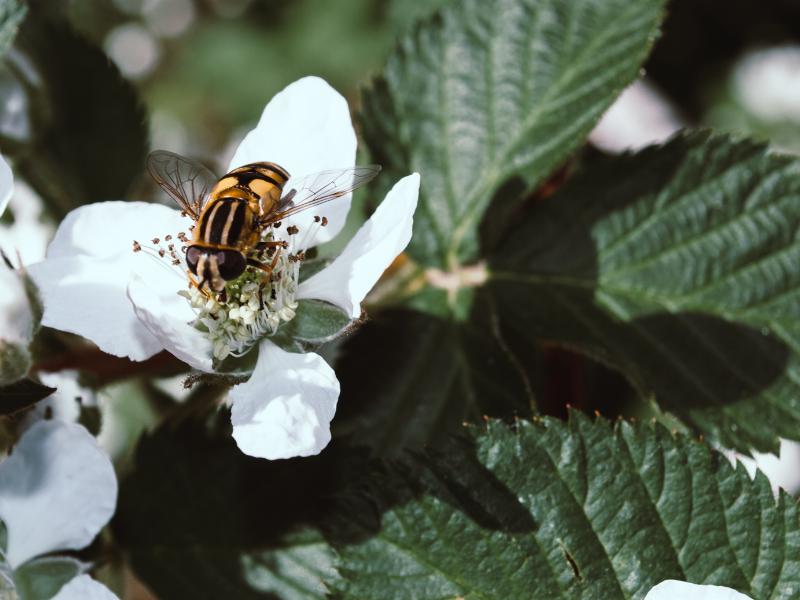
Once you plant blackberries, the first canes that sprout from the ground are primocanes, which don’t usually flower in the first year.
If you grow your blackberries in the fall, don’t be surprised when your plants develop flowers the following summer. It is, however, important to prune these flowers so that they don’t turn into fruits. This is because the plant at this stage has a weak rooting system, and fruiting at this stage will cause production to diminish in the future.
Over time, the primocanes will develop lateral branches and form lead buds before the dormant season begins. In the following growing season, these lateral branches will develop floricanes that bloom and bear fruit, leading to a large yield.
Blackberries will flower in the second year. So, if you are growing these plants, you’ll need a bit of patience.
Do Blackberries Bloom More Than Once?
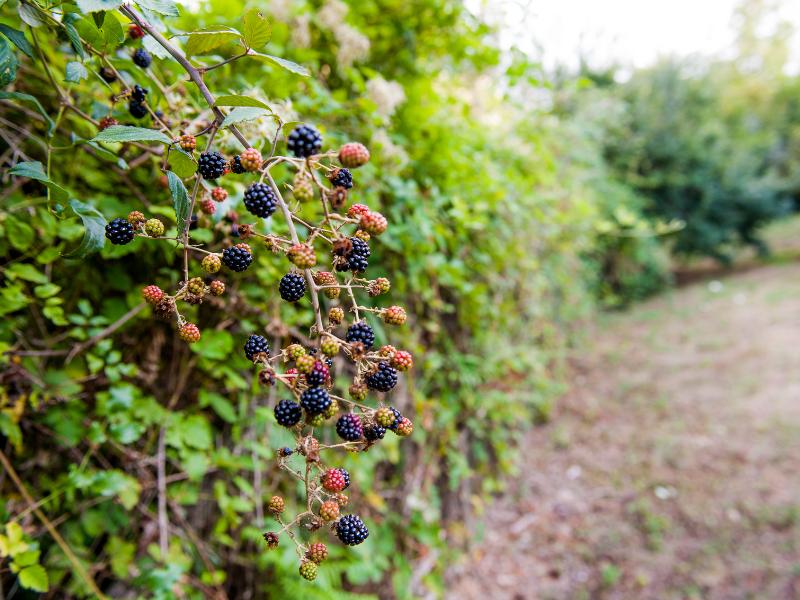
fruit formation begins. After fruits have formed, the same place won’t produce another flower.
On the upside, blackberries have perennial roots. This means you won’t have to replant the canes each season to enjoy these fruits. The part of the plant above the ground is biennial and will only last two years before dying.
An ever-bearing blackberry variety also exists where flower and fruit formation continues on the older canes. Fruit formation on the newly sprouting canes will then begin in the fall.
When Do Blackberries Produce Fruit?
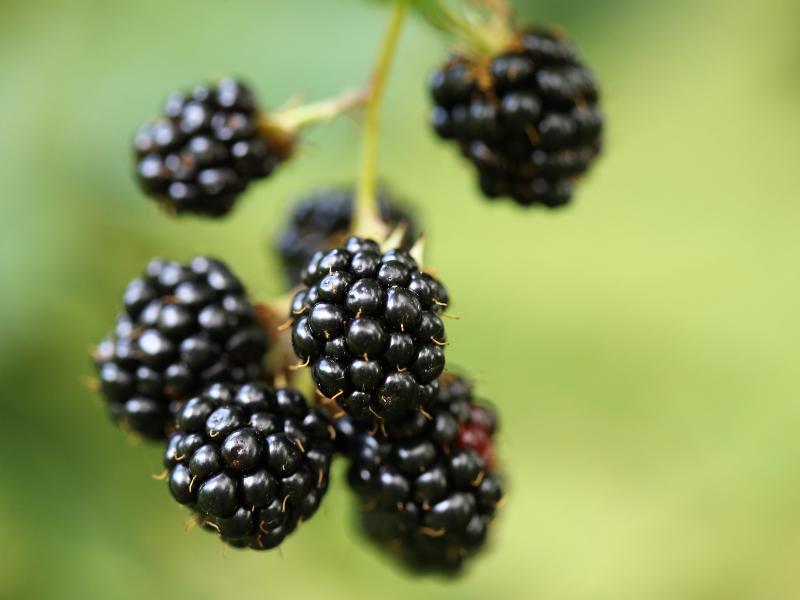
After flowering, blackberries will take 45-60 days to produce fruit. But remember, pollination has to be successful before fruit formation begins.
Thankfully, blackberry bushes and vines are self-fertile. As such, you don’t need a male and female plant for pollination.
Additionally, blackberries are a great attraction for pollinators, so once the flowers bloom, they’ll attract different pollinators to the flower, increasing the chances of fertilization and making it easier. Other plants in the garden can also benefit from these pollinators.
The blackberry fruiting season will last from mid to late summer (from July to September). The good thing is that the period lasts long. You can pick berries 2-3 weeks before fruit production stops on the plant.
Like raspberries, blackberries have seeds, so before consuming them, be prepared to manage with these tiny seeds under your teeth.
The advancement of science and research has made some commercial growers produce blackberries with very tiny seeds you can hardly feel!
Harvesting Blackberries
Harvesting your fruits may seem like a pretty straightforward activity. After all, it’s just removing the fruit from the plant. But how exactly do you pick the blackberries without interfering with either the fruit or plant?
The first thing you need to know is that the fruit of this plant won’t ripen further once it has been picked, so you should be absolutely sure your blackberries are ready for picking.
One common mistake is assuming that once the berries turn black, they have ripened and are ready for picking, but this is far from the truth.
Such berries aren’t completely ripe yet, and consuming them will leave you with a bitter taste.
Pro tip: Once the strawberry turns black, wait 3-4 days before picking them for the sweetest taste.
The best time for harvesting your berries, or any fruit and vegetable, is early morning. This way, the berries are freshest since the plant hasn’t lost water due to high heat levels.
If picking the fruits early in the morning isn’t possible, you can also do it in the evening once the plants have recovered from the hot midday heat.
Storing Blackberries
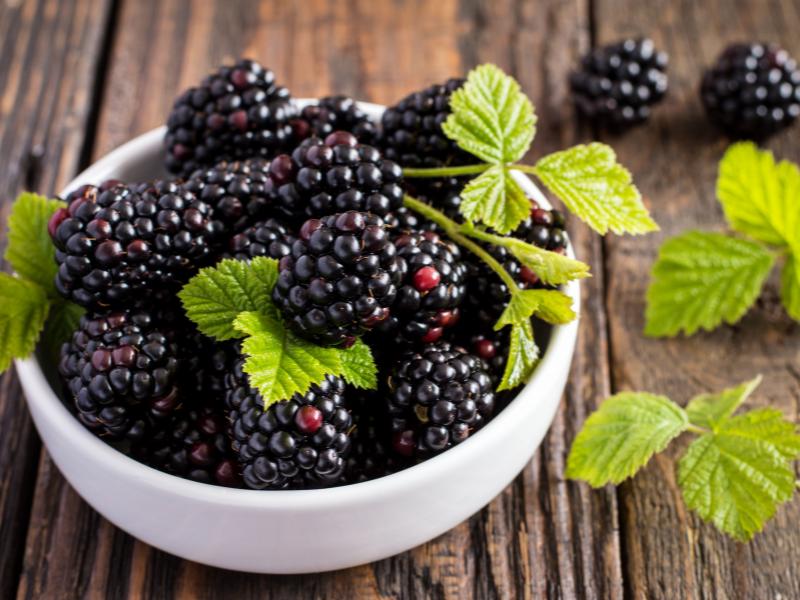
After picking your fruits and probably having your fill of them, you’ll be left wondering, “What do I do with all this produce?”
Well, you can store some for future use. Who knows, maybe you may get interested in baking pies or blending juice!
Blackberries can last for about a day when left in the open air. To increase the shelf life even further, you can wash and refrigerate them. This way they can last for about 2-3 days.
Of course, the best way to store them long-term for future use is to freeze them and thaw them only when you’re ready to eat or use some.
One of my favorite things to do when I have enough blackberries is make blackberry jam. I use a fairly simple recipe that you can try.
Simply mash some blackberries in a bowl and cook them in a pan on low heat. Then add some sugar and lemon juice. Stir the pan such that all the sugar dissolves, and let the mixture boil for about 20 minutes, and there you have it! Your homemade blackberry jam!
Depending on the amount of blackberries you use, you may need to boil the mixture for a longer period.
How To Plant And Grow Blackberries
Before planting blackberries, you first have to decide on the variety you’ll grow. There are thorn or thornless varieties, erect, semi-erect, and trailing blackberries.
One of the most popular blackberries ideal for eating raw or baking cakes is the Triple Crown Cultivar, a semi-erect and thornless variety.
The Prime-Ark Freedom cultivar is the perfect choice if you prefer an erect and thornless variety.
You can try a trailing variety such as the Pacific blackberry to add even more variety to your garden. Even though it has the tiniest of fruits among the three, they are equally as delicious.
When choosing a variety, consider the climatic conditions of your area or the USDA zone since not all varieties can handle harsh cold climates.
How to Plant Blackberries
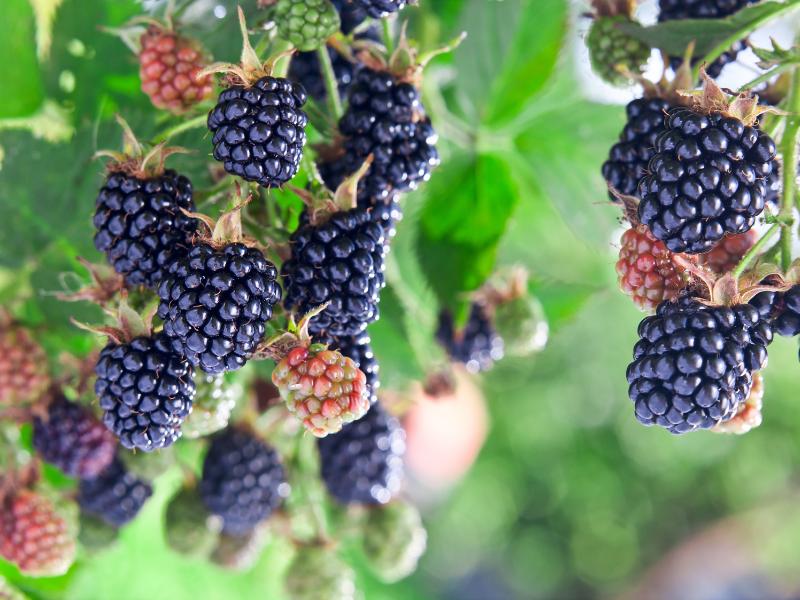
The trailing and semi-erect blackberry varieties require some support as they grow, while the erect varieties can grow without such support. Place some trellises on the soil if your variety needs support.
Another important thing to take note of is the spacing and location of the brambles. Blackberry plants need to be well-spaced so they can grow and spread easily. They also need plenty of sunlight, which helps sweeten the fruits.
As for the soil, blackberries thrive in fertile and well-drained soils. If you have heavy garden soil, you should amend it with some compost or use a raised bed to grow the plants. Soil amendment should be done in the summer or fall before planting the crops. Ideally, the soil’s pH level should be between 5.5 and 6.5; otherwise, the plants may struggle to absorb nutrients.
Once you have prepared the ideal place to grow your blackberries, it’s time to start planting. This should be done either in early spring or fall. The temperatures are cooler at this time, and the plants are less likely to suffer from transplant shock.
When planting, ensure the entire root system is under the soil and sufficiently water the plants after planting.
To prevent excessive water loss and weeds from festering, mulch the plants with either wood chips, black plastic, or pine straw.
Overview of the Care Guide
While we’ve already examined the most important aspects of growing blackberries, such as using the right soil type and ensuring exposure to sunlight, there are some other aspects that you need to consider in order to increase yield and ensure the best health for your plants.
First, blackberries need about 1-2 inches of water weekly to thrive. You can do this by irrigating your plants twice a week during the growing season. During the harvesting season, you should double this amount to increase the sweetness and juiciness of your fruits.
The best USDA zones where blackberries thrive are between USDA zones 7-9. Here, the winters aren’t too harsh, which is good for blackberries. However, some varieties can survive even in harsh winters. It would be best to conduct some research before planting to understand what your variety needs. For the best result, blackberries will need about 300 hours of chilling hours below 45 ℉.
Another important factor to pay attention to is fertilization. You can opt for organic fertilizers, compost, or manure if you want organic fruits or use balanced slow-releasing fertilizers. The best time to fertilize your plants is in early spring during the growing season.
Pruning is another crucial part of the blackberry care guide. Pruned plants have a higher yield as compared to unpruned ones. Use some shears or secateurs for this, but sterilize them first so as not to infect the plant.
To encourage lateral branching on the plant, cut the primocane at a 45° angle once it reaches a height of 3 – 4 feet. After harvesting the fruits, you should also cut the floricanes as they can’t fruit again.
Commonly Asked Questions
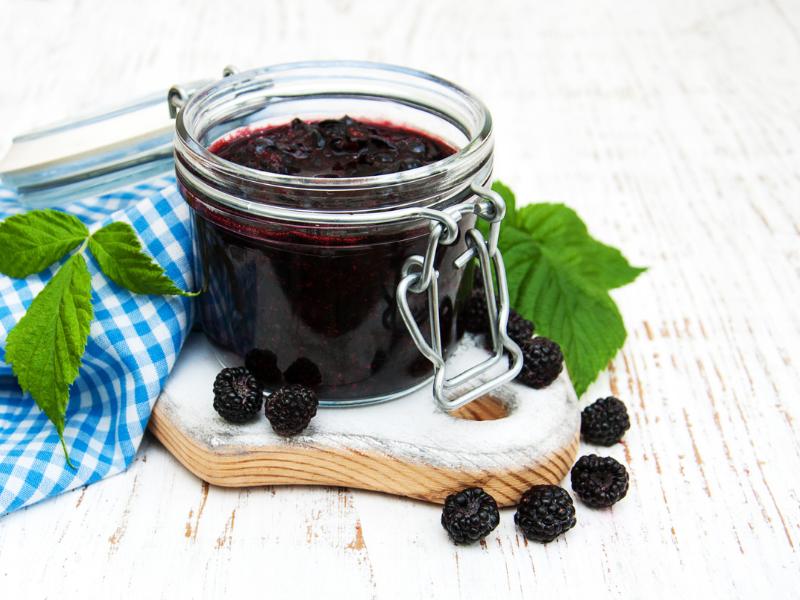
Blackberries are some of the most popular fruits, so it’s only fair if you know as much as you can about them before growing them.
This section discusses some of the most common questions our readers have raised about blackberries.
What are the most common blackberry varieties?
There are many varieties of blackberries, but the most grown types include the thornless Apache, Arapaho, Navaho, and the triple crown cultivars.
Thorny varieties include the Prime-Ark and Kiowa varieties that have large, irresistible fruits.
What are the benefits of blackberries?
As with most fruits, blackberries have a lot of benefits, including an abundance of vitamins C and K, a source of manganese and fiber, and they can also help the skin heal and regenerate faster. Blackberries also help reduce cholesterol, regulate blood sugar, and boost the immune system.
Did you know blackberries can help fight tooth cavities and gum diseases? Well, now you do. Blackberries have antibacterial and anti-inflammatory properties that help solve these issues.
Summing Up
Nothing is more exciting to a farmer than enjoying the fruits of your labor, and when your blackberries bloom, you’re just about halfway there.
There are several factors that may impact the blooming time of blackberries, such as the weather, the variety you have grown, and the proper care guide. All these factors need to be taken into account to determine when your plants will bloom.
However, the plants will flower in late spring or early summer depending on the factors.
With our tips, you now know more about flowering and fruit formation in blackberries. We’ve also provided some tips on harvesting and storing blackberries and properly taking care of the plants to have the best yield.
So try your hand at growing blackberries, and with a little patience, you’ll enjoy these fantastic fruits.

